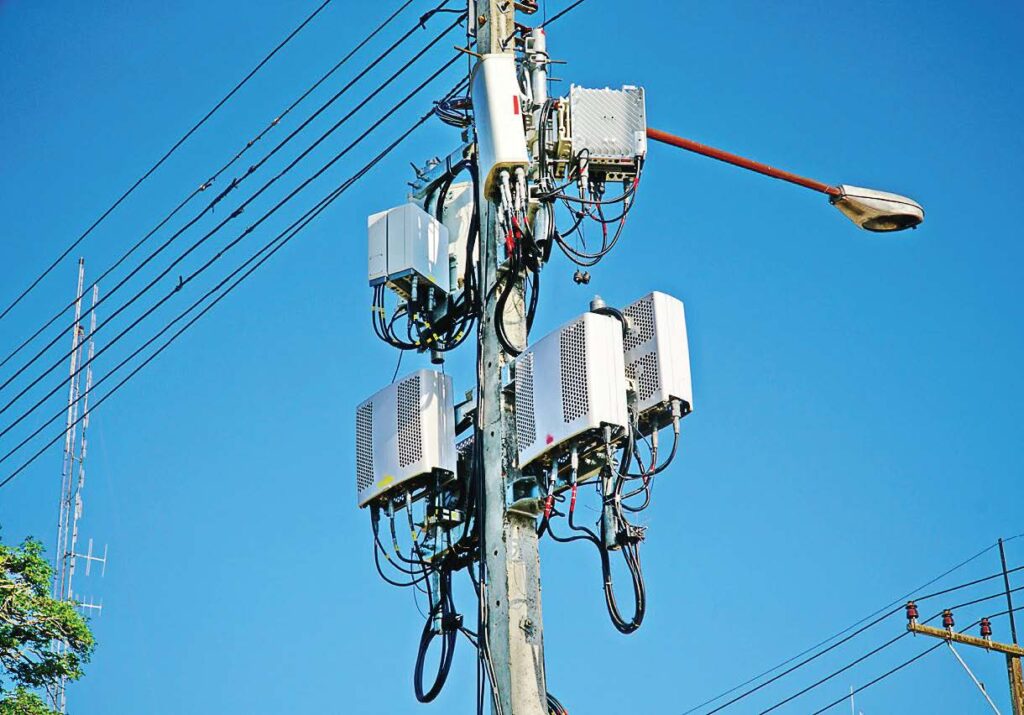Cell Towers and Aesthetics:
URGENCY ORDINANCE NO. 947-2019
Mendocino TV commented on the latest California guidelines regarding exposure to cell tower radiation and recommendations that they not be sited on, or next to, Hospitals, Fire Stations and Police Stations. https://www.activistpost.com/2019/03/becausefirefighters-the-international-association-of-firefighters-iaff-opposes-cell-towers-and-antennas-on-stations-due-to-health-risks-this-is-why-they-shouldnt-be-installed-near-homes.htm
Sage Statham from Mendocino Community Network asked that the City not combine WISP (Wireless Internet Service Providers low power 5 gigahertz bandwidth) into the same guidelines as 5G from AT&T which is a different technology altogether.
Paul Clark and Jacob Patterson expressed their displeasure about the issue being brought up at such a late time, in an emergency meeting, with very little time for the public to prepare.
Jessica Morsell-Hayes asked about the scope of authority they had to regulate and City Manager Tabitha Miller replied that there was limited scope of authority, primarily aesthetics.
Tess Albin-Smith brought several examples from other cities, noting the City of Sonoma’s for having enforcement penalties for non compliance.
Most of the discussion surrounded the ability to amend the ordinance in the future. After repeated assurance that this was just an emergency ordinance to meet the deadline of April 15th. With Bernie Norvell absent the rest of the City Council passed the ordinance unanimously.

I spoke about a concept that the new 5th District Supervisor has been recommending and used as a platform in his campaign.. Ted Williams spoke about the County getting proactive in finding locations in the county where the county can develop telecommunications infrastructure that satisfies broadband demands for well into the future. Having already placed and zoned telecommunication facilities and renting co-location fees commensurate to what the industry charges, random placement can be controlled with sensible zoning.

Tom Vargas and I commented on AT&T’s plans on placing their 5G facilities along their public easements and right of ways, using their existing poles and facilities, which cannot be made subject to this ordinance. There has been no comment at this time from Comcast, who rents right of ways and places on AT&T’s and PG&E’s poles, all through the “Joint Pole Association”
The three pole mounted utilities in the residential streets are PG&E, AT&T and Comcast
- PG&E, now in bankruptcy, would love to rent pole space to 5G transmitters for increased revenue
- AT&T still not providing certain services through their u-verse product line, like they provide in other counties, have right of ways, but they are defined and regulated by an order by the Public Utilities Commission called, General Order 95, or GO95 which is one of the guidelines the cities can use to ensure proper pole construction demands. They may not provide certain services that infringe upon the exclusive franchise between the county and Comcast.
- Comcast holds an exclusive franchise with the county until the end of the year when the Public Utilities Commission starts collecting and distributing franchise fees in a more standard manner between franchise holders and government beneficiaries of the franchise fees.
- These fees used to fund Public Access Television in Mendocino County. Since 2017 Mendocino County and The City of Fort Bragg have stopped funding independent Public Access Television. They have siphoned all of the franchise fees into creating Government Access Stations where the government administers the public’s access to the cable subscribers.
These easement owners are going to be harvesting a windfall by leasing utility right of ways. In the areas that can be regulated, GO95 is the one that regulates this pole space, easements and right of ways in residential areas. What is ambiguous is how the 500 foot distance calculation will relate to all of the wireless technologies, not just 5G cell service but all bandwidths. There will need to be additional review before amending the ordinance, which can be done in the future, now that the ordinance has been passed.

There is a recommendation in this ordinance that telecom vendors be restricted to facilities that are built for co-location whenever possible. If the city develops these locations proactively they can funnel all opposition and support into regulating that, when located on private property, they should be zoned to City co-location facilities sites. These sites would need to have fiber access to the network for modern connectivity so who better to do it that the City of Fort Bragg? They can put trenches and conduit faster and easier than anyone else throughout town and the project could pay for itself in the first year with rental fees.
The other , overlooked part of this ordinance are the other bandwidths and technologies this aesthetics ordinance addresses. Keep watching as I report more on this issue.




